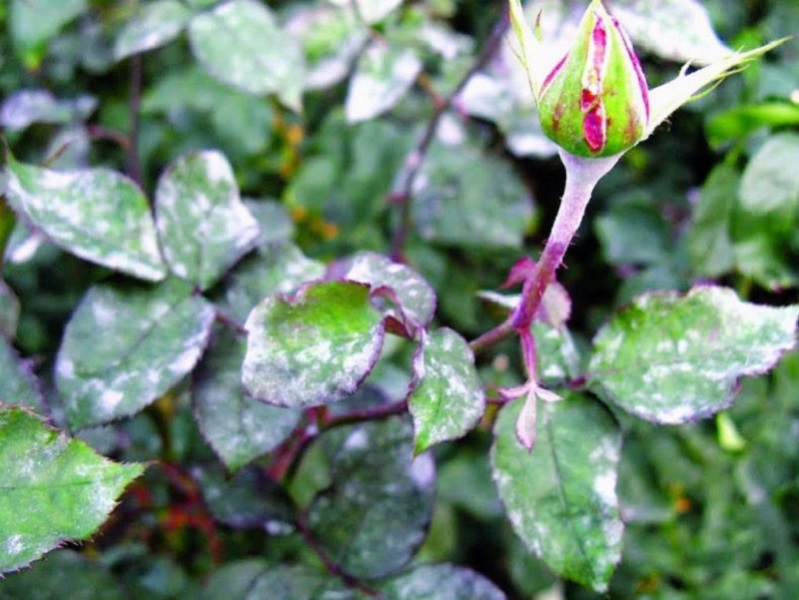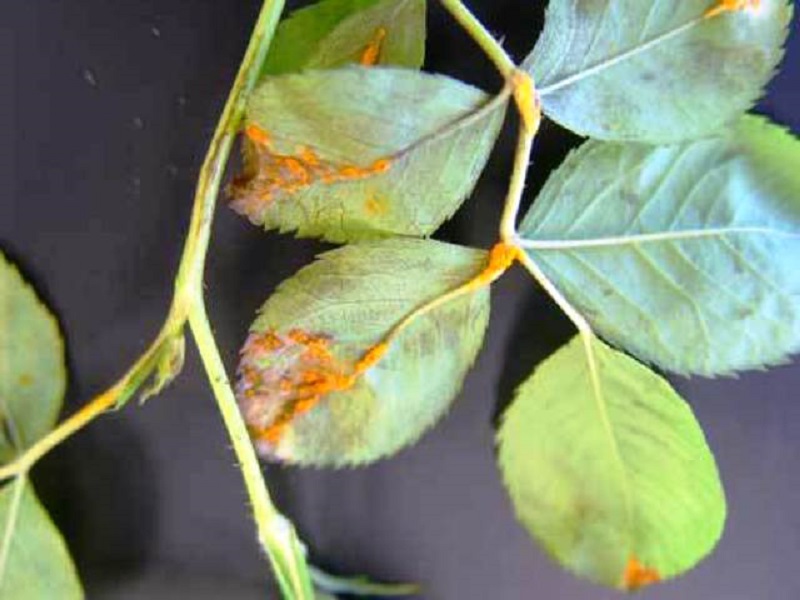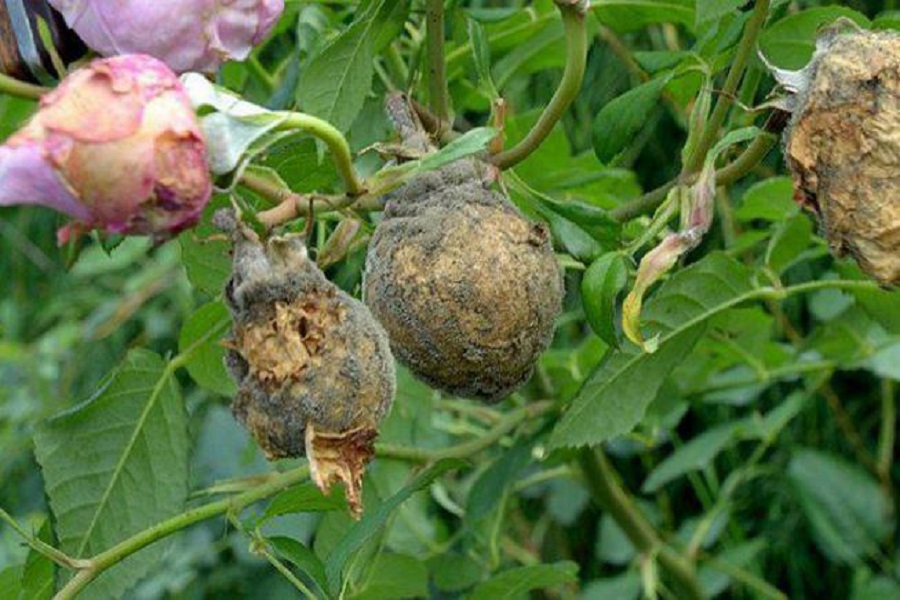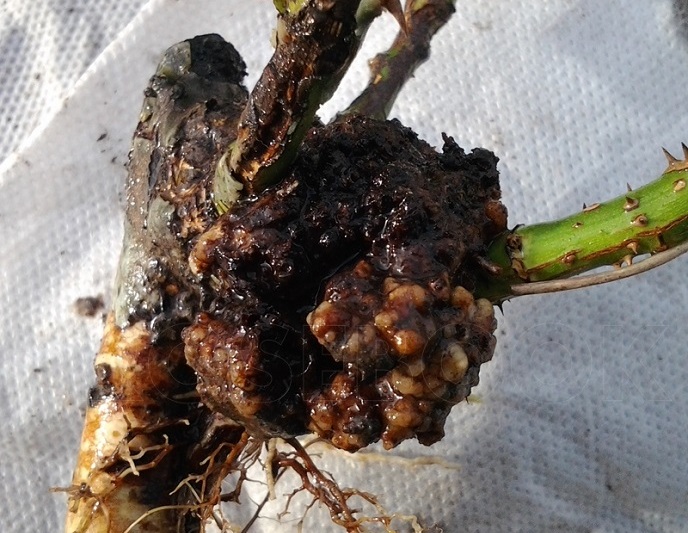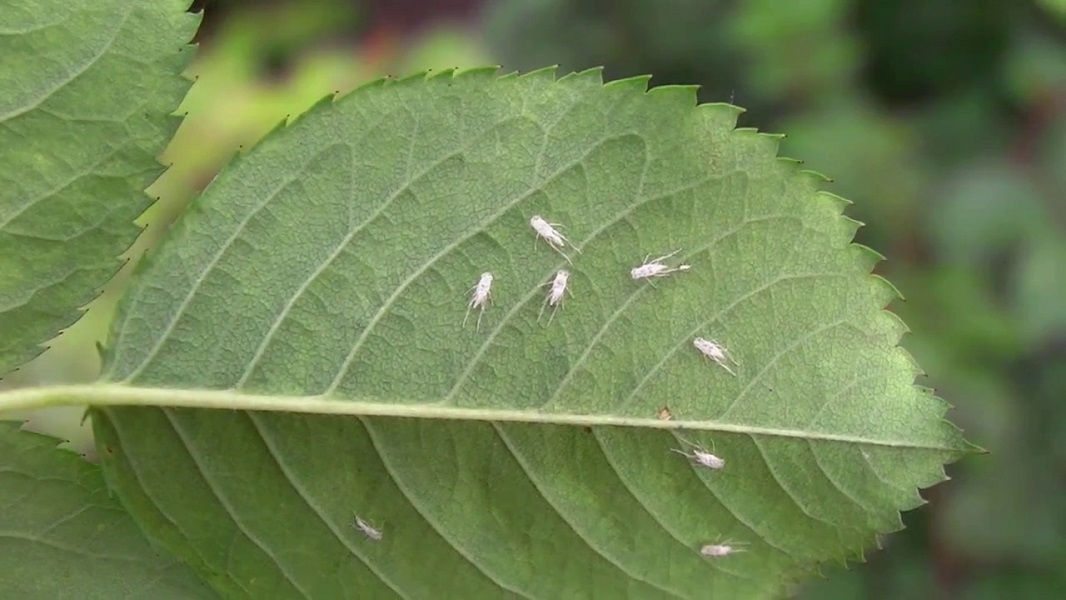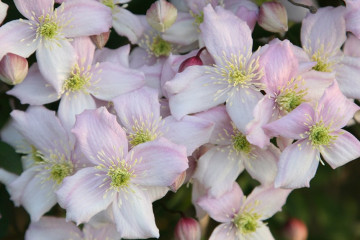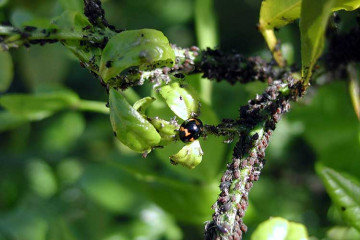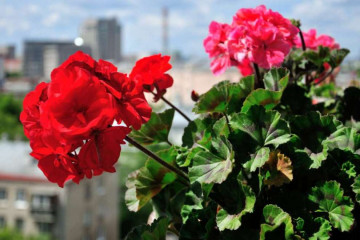Diseases of roses - treatment and pest control
Content:
Roses are the decoration of any garden, but diseases and pests negatively affect their growth and flowering. If measures are not taken in time, plants may die.
Diseases of roses: how to cure them
Like any cultivated plants, garden roses are susceptible to disease. Suffer from the negative effects of pests. But you shouldn't take it for granted. The danger arises when the flower gets into unfavorable conditions. It could be bad weather. But, as a rule, a complex of factors is of decisive importance.
The main pests:
- weevils;
- bronze;
- scoop;
- walnut and others.
A sharp increase in temperature outside causes pests to multiply. High humidity of the external environment provokes the development of fungal diseases.
If you choose the wrong place for planting, such rose diseases will arise and their treatment will be required immediately:
- Gray rot. In wet weather, it spreads quickly on roses. And due to the dense planting, there is so little space between the flowers that the moisture does not have time to evaporate. The earth dries out for a long time after a rainstorm.
- Black spot. It occurs in damp and cool weather, when the foliage does not dry out for a long time.
- Powdery mildew prefers heat. Typical for plants growing in the southern parts of the garden.
The most common causes, types and descriptions of diseases
There are many diseases of roses and they are all treated in different ways. To protect the plant and prevent its death, it is necessary to correctly determine the cause of what is happening. It is worth considering common rose diseases and pests, why they appear and how to treat them.
Fungal
If a white bloom appears on young foliage, shoots and even buds, then it is necessary to fight powdery mildew. The leaves are getting thicker. Curvature appears.
Powdery mildew (cercosporosis) is a mycelium that spores with fungi. The main reason for the appearance of the disease is considered to be an excess of nitrogen and a lack of calcium in the soil. The earth is constantly drying up. Susceptible to sandy and cold gray soil varieties.
Cytosporosis refers to fungal diseases that cause drying of individual branches and complete death of the flower. Attacks bushes that have weakened after freezing, drought, sunburn, improper and untimely pruning.
To protect the plant, it is recommended to protect it from mechanical and other types of damage. Increase the vitality of the rose. Apply fertilizers to the soil, ensure proper watering, timely pruning, protect from wind and frost. Parts of the plant with signs of the disease are cut off with a capture of 50 mm.
White spot (septoria) is a fungal disease that affects cultural, decorative and wild vegetation. Small dark orange, brown spots appear first. Then there is a color change. They become light in the center. They remain dark along the contour.
The best way to fight the disease is preventive measures. It is recommended to collect and dispose of the remaining vegetation. Remove affected foliage in a timely manner. Carry out preventive treatment of the bush with drugs against fungal infections, which allows to increase the plant's protection against septoria.
Rust of roses
It turns out roses can rust. Rust is a fungal disease that can be brought into the garden in many ways. Often it comes in with new planting material. Climbing varieties of roses are more susceptible. Occurs in heavy and wet soils.
Different plants can get sick. Rusty spots appear on the foliage on the back. They turn black over time. Shoots lend themselves to curvature. The foliage turns yellow and falls off. The rose stops blooming. If medical measures are not taken in time, the bush will die. The infection will spread throughout the garden.
Root rot
Rot is a fungal infection that manifests itself in prolonged rainy weather. Dampness and a decrease in air temperature causes the appearance of small black spots on the lower part of the stem. It spreads rapidly throughout the plant. The leaves turn yellow. Covered with bloom.
How and how to treat black spots on roses:
- After seeing the first signs of root rot, it is recommended to remove the damaged parts of the plant.
- Process the rose with special products containing mancozeb and triazole. For the first week, drugs with mancozeb are used, and the second with triazole. Spraying is carried out in the evening to eliminate the presence of dew on the foliage.
Gray rot (mold) on roses or botrytis is a fungal disease that affects the plant from top to bottom. It is carried by gusts of wind, precipitation, animals, insects and birds.
Bacterial
Bacterial cancer is a growth on the root collar and roots of the bush. They can be up to 30 mm in diameter. It is worth familiarizing yourself with what to do if roses are sick with such a disease.
While decomposing, the build-up changes color from gray to brown. Less commonly, the lesions concern the aerial part of the rose, stems and branches. Lumpy nodules and tumors appear.
The disease is actively developing in a humid environment, excessive manure fertilization.
In the process of transplanting, roots damaged by bacteria are removed, growths are cut off. The root system is immersed in a 1% solution of copper sulfate. After 5 minutes, the flower is taken out. The roots are washed in water. They are dipped in a clay-sand composition.
Viral
Viruses are parasites that cannot reproduce without a host cell. Getting into the structure of the plant, they finally hit it. The cells are doomed. There is no salvation. It is impossible to remove the virus. Rose will die with him. Alternatively, pruning diseased shoots. If the virus has not spread throughout the bush, there is a chance to save it. In other cases, it is important to destroy and dispose of the diseased plant to prevent further spread of the disease.
Rose mosaic is a viral disease, the signs of which appear after heat stress, drought. Sometimes no manifestations are visible at all.
An accurate determination of the virus is possible only after examining the material under a microscope. The main diagnostic technique: examination and comparison of signs.
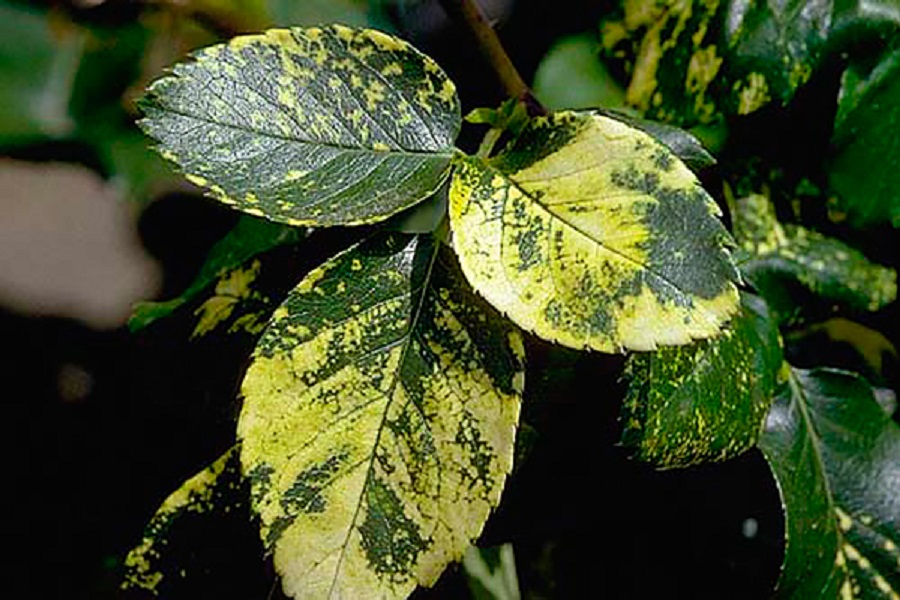
For a mosaic of character, symptoms: drawings and spots of an indefinite shape, wavy lines on foliage
Bark necrosis
Disease of woody vegetation, including conifers, caused by fungi.Differs in the locality of the withering away of the bark of the stems and branches of the rose. The lesions are characterized by an oblong shape. They differ in shape from a healthy plant. Specific formations in the form of stroma or sporulation may appear.
Remedies for roses: purchased and folk remedies
Fungicides are substances of chemical or biological origin that can heal a plant from fungal infections. Depending on their chemical properties, they are subdivided into:
- organic;
- inorganic.
The advantage of the first option is that they decompose and do not contain metals. The solution for spraying is simple: the drug is added to the water in the required volume. According to the instructions for use.
There are many folk remedies that can cure roses without chemistry. Infusions of mullein, wood ash, baking soda, soap, potassium permanganate, whey, garlic and much more help. Various recipes will help fight insects. The nature of the actions is determined by diseases and pests of roses.
Pest control
A lot of pests in the form of insects can breed in the garden, which, infecting plants, leads to their illness and death. To save the vegetation, it is recommended to take timely measures to destroy them.
Green aphid
Attacks rose and rose bushes. Appears outdoors and in pots. The pest is large. Green colour.
In the spring, after wintering, larvae emerge from the eggs. These are females without wings. Only the next offspring will be winged. Will be able to fly to other plants, forming new colonies.
Young shoots and buds are often affected. Shoots become crooked. The buds do not open at all.
To cure and protect the plant from the pest, it is recommended to buy special chemicals. If necessary, the bush is processed after half a month until the aphids disappear completely.
Spider mite
The insect is small in size - about 0.5 mm. Can only be seen through a magnifying glass. It is a great threat to indoor and garden plants. It feeds on flower cells, drinking their juice. Causes irreparable harm to the rose.
You can get rid of insects by means of antiparasitic drugs:
- Fitoverm;
- Aktofit;
- Neoron;
- Actellik;
- Fufanon.
The first treatment kills the adults. The eggs remain. Spraying is carried out within a month to destroy all pests. The plants are pre-watered.
Rose leafhopper
Insect 3.5 mm in size. Oblong shape. Pale yellow or green. It feeds on the sap of living plants. The creature is omnivorous. It is difficult to get rid of the pest due to its mobility. Sensing danger, he jumps from one bush to another.
Insect control is complex. Sanitary pruning of trees and bushes is carried out in the fall. Fallen leaves are utilized, on which there may be leafhopper larvae. In the spring, processing is carried out with special means.
Rosewood sawfly and leaf cutter bee
Outwardly they resemble small wasps. Dangerous for young roses. The pest lays eggs that resemble caterpillars. You can fight them manually by collecting insects. If there are a lot of them, the bushes are treated with insecticides.
The leaf cutter bee is similar to the honey bee. Pests cut out pieces of foliage, feeding on it. To get rid of them, you need to destroy the flowering weeds that attract leaf-cutting bees.
Beetles on roses, weevils and bronzes
Weevils and bronzovka feed at night, hiding during the day. Their larvae are in the ground.They eat the root system of roses. Adults sit in the flower itself. Chemicals are used to destroy pests. Although beetles can be collected by hand. They are big enough.
Nutcracker and scoop
The nutwork forms swellings on the plant, reaching 50 mm. Eliminated only by pesticides. In addition to chemical treatment, mechanical warfare is being carried out. Cut off the diseased areas of the flower.
The scoop feeds at night. More often we see only traces of her vital activity. Insecticides are used in the fight.
Do not be afraid of diseases and insects that affect roses. It is important to see the problem in time and take measures to eliminate it.

